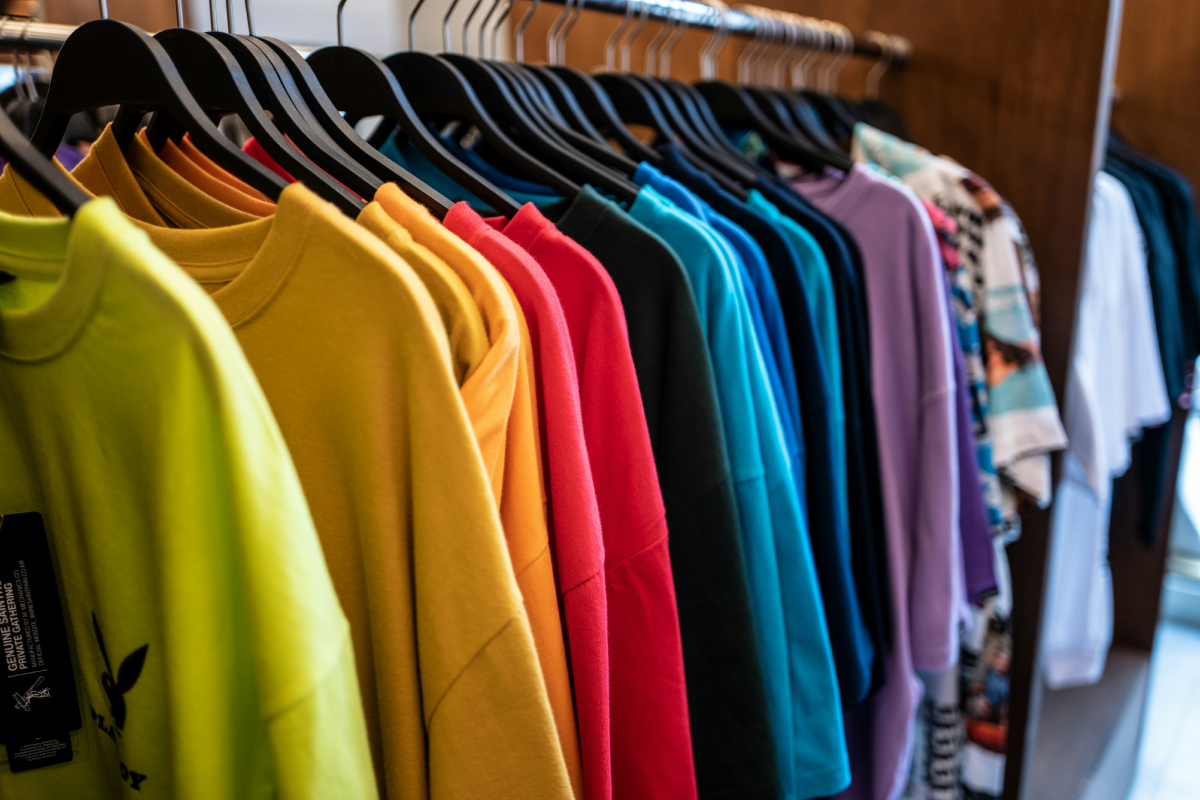
DIY Color Analysis: Discovering Your Season from Home
Understanding your season is a powerful tool for building a wardrobe and makeup collection that harmonizes with your natural features. While professional color consultations are one way to find your color season, DIY color analysis offers a flexible, cost-effective way to discover your colors.
In this article, we’ll explore the basics of color analysis, why knowing your color season is useful, different DIY methods, and how you can do an in-depth color analysis from the comfort of your home.
Table of Contents
- What Is Color Analysis?
- Why DIY Color Analysis Is Useful
- DIY Color Analysis Methods
- Using the Vivaldi Color Lab App for DIY Color Analysis
- Start Your DIY Color Analysis Today
What Is Color Analysis?

Color analysis is a process that matches an individual’s natural coloring (skin, hair, and eye color) with a specific palette of colors that complements them.
The practice is often based on the 12-season color system, which divides people into four primary seasons—Spring, Summer, Autumn, and Winter—each with three sub-seasons. Each season has unique tones that enhance the natural beauty of the individual.
By knowing your color season, you can make informed choices about your wardrobe, makeup, and even hair color, ensuring that every shade enhances your appearance rather than washing you out.
Spring
People in the Spring category typically have warm undertones with light to medium contrast in their coloring.
- Colors that Flatter: Clear, warm, and light colors, such as coral, peach, golden yellow, and warm pink.
- Avoid: Dark and overly cool shades, which can overpower Spring’s natural brightness.
Summer
People who fall into the Summer category have cool undertones and soft, muted coloring.
- Colors that Flatter: Soft, cool, and muted shades, including lavender, powder blue, rose pink, and cool gray.
- Avoid: Warm and overly saturated colors, as they can clash with Summer’s gentle coloring.
Autumn
Autumns have warm undertones with a rich, earthy coloring that gives them a natural glow. Their skin can vary from fair to medium or deep, often with golden or olive tones.
- Colors that Flatter: Warm, earthy, and rich colors like mustard, olive green, burnt orange, and deep browns.
- Avoid: Cool, bright colors that can make their complexion look washed out.
Winter
Winter individuals have cool undertones with high contrast and vivid coloring. Their skin can be very fair, olive, or deep, often paired with dark hair ranging from dark brown to black.
- Colors that Flatter: Cool, intense, and high-contrast colors, such as icy blues, stark black, pure white, and jewel tones.
- Avoid: Warm and muted shades that can detract from Winter’s natural contrast.
By identifying your color season, you gain insight into which colors bring out the best in your natural features.
If you’re still unsure about your season, the Vivaldi Color Lab app provides a quick and precise analysis. Simply upload a photo to receive an automatic assessment of your color season, making it easy to discover your best shades with confidence.
Why DIY Color Analysis Is Useful

- Enhance Your Look with Minimal Effort: By wearing colors that flatter you, you can look more vibrant, youthful, and polished without heavy makeup or styling.
- Build a Cohesive Wardrobe: Knowing your best colors simplifies shopping and reduces closet clutter.
- Confidence Boost: Wearing the right colors can elevate your confidence, as you know you’re looking your best.
DIY color analysis gives you control over the process, allowing you to experiment, discover, and ultimately feel empowered by your unique palette.
DIY Color Analysis Methods

DIY color analysis allows you to explore your seasonal palette without professional consultation. Each method has its own approach to understanding your undertones and season. Here’s an in-depth look into some of the most popular DIY methods, along with their benefits and potential drawbacks.
1. Mirror Test
How It Works
The Mirror Test involves standing in natural light with a mirror and holding different colored fabrics or clothing up to your face. Observe how each color affects your complexion, paying attention to whether it enhances or dulls your features.
Benefits
- Affordable: Requires only a few pieces of clothing or fabrics in different colors.
- Immediate Feedback: You can instantly see which colors work well with your skin tone.
Drawbacks
- Color Knowledge Needed: This method requires knowing which colors to drape to accurately determine your season.
- Limited Resources: You may be limited by the specific colors of clothing or fabrics you have on hand.
- Limited Precision: It can be hard to determine subtle differences, especially without a wide range of colors.
2. Jewelry Test
How It Works
The Jewelry Test compares how gold and silver jewelry look against your skin. Silver is typically more flattering on cool undertones, while gold complements warm undertones.
Benefits
- Simple and Fast: This method only requires two pieces of jewelry.
- Helpful for Determining Undertones: Quickly identifies whether your skin has warm or cool undertones.
Drawbacks
- Limited Scope: Determines undertones but doesn’t identify specific color seasons.
- May Not Be Conclusive: People with neutral undertones might look good in both, making it harder to reach a conclusion.
3. Digital Color Analysis Apps
How It Works
Color analysis apps use technology to analyze a selfie or photo, providing a season match based on your skin, hair, and eye color.
Benefits
- Convenient: Offers a quick and easy way to get an analysis without leaving home.
- Comprehensive: Some apps, like Vivaldi Color Lab, go beyond just determining your season by providing features like digital drapes, lipstick and blush try-on, a free color analysis quiz, and a personalized AI analysis report.
- Affordable: Many apps offer free or low-cost options, making them accessible to a wide range of users.
- Consistency: AI analysis offers a consistent and repeatable process, reducing the guesswork often involved in DIY methods.
Drawbacks
- Varied Accuracy: Some apps may not be as accurate depending on photo quality or lighting conditions.
- Reliance on Technology: Results may vary if the app doesn’t have advanced algorithms.
4. Seasonal Draping with Clothes
How It Works
Try on clothing that matches each season’s colors and observe which ones make your complexion look its best. Look for signs like brighter eyes, even skin tone, and a radiant overall appearance.
Benefits
- Effective for All Seasons: Allows you to try colors from each seasonal palette to find your best match.
- Direct Observation: Lets you directly see the impact of different colors on your appearance.
Drawbacks
- Time-Consuming: Requires trying on various outfits and comparing them.
- Need for Variety: You might need a wide range of colors to get a full seasonal view.
Using the Vivaldi Color Lab App for DIY Color Analysis

If you're looking for a more precise and convenient way to find your season, the Vivaldi Color Lab app offers a complete color analysis experience. Simply upload a photo, and the app's AI-driven analysis can automatically determine your color season. It includes additional features, such as:
- Digital Drapes for all 12 seasons
- Color Comparisons to easily see how different seasonal colors suit you
- Lipstick, Eyeshadow, Blush, and Hair Color Try-Ons to experiment with personalized looks
- AI Analysis that eliminates guesswork, giving you instant results
- Personanized Color Palette based on your season, as well as guidance on colors to avoid
With these tools, the Vivaldi Color Lab app brings a professional color analysis experience right to your fingertips. Whether you're just starting or seeking to refine your color knowledge, this app makes DIY color analysis accessible and enjoyable.
Start Your DIY Color Analysis Today
DIY color analysis empowers you to take control of your style and embrace colors that bring out the best in you. Whether you start with the mirror test or dive right in with the Vivaldi Color Lab app, knowing your season can transform your wardrobe and boost your confidence.
Related Reading
- 5 Best Color Analysis Apps for Finding Your Season
- Light Spring vs Light Summer: What's the Difference?
- Deep Autumn vs Deep Winter: A Deep-Dive Comparison
- Zendaya's Season: Deep Autumn or Deep Winter?
- The Complete Guide to Finding Your Season
- How to Choose the Perfect Lipstick Based on Your Skin Tone
- How to Choose the Perfect Blush Color For Your Skin Tone
- Are You Low, Medium, or High Contrast?
- How to Wear Colors That Aren't in Your Season
